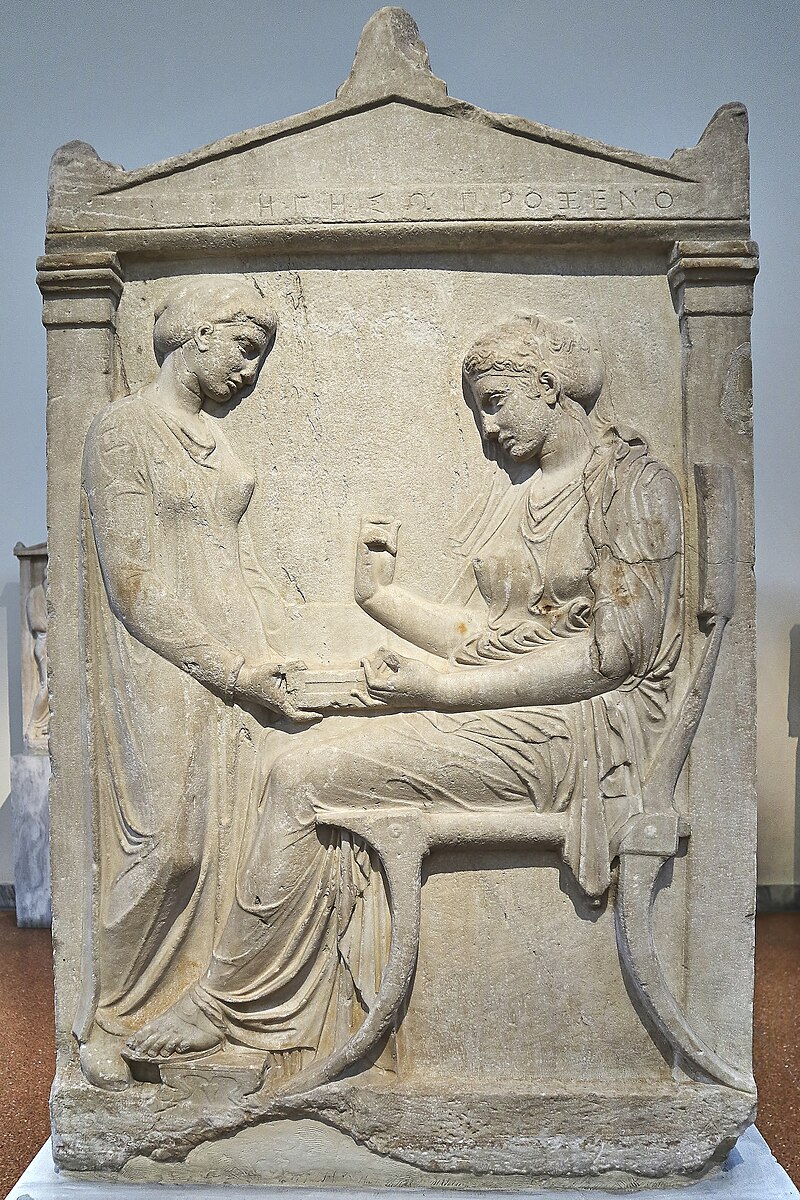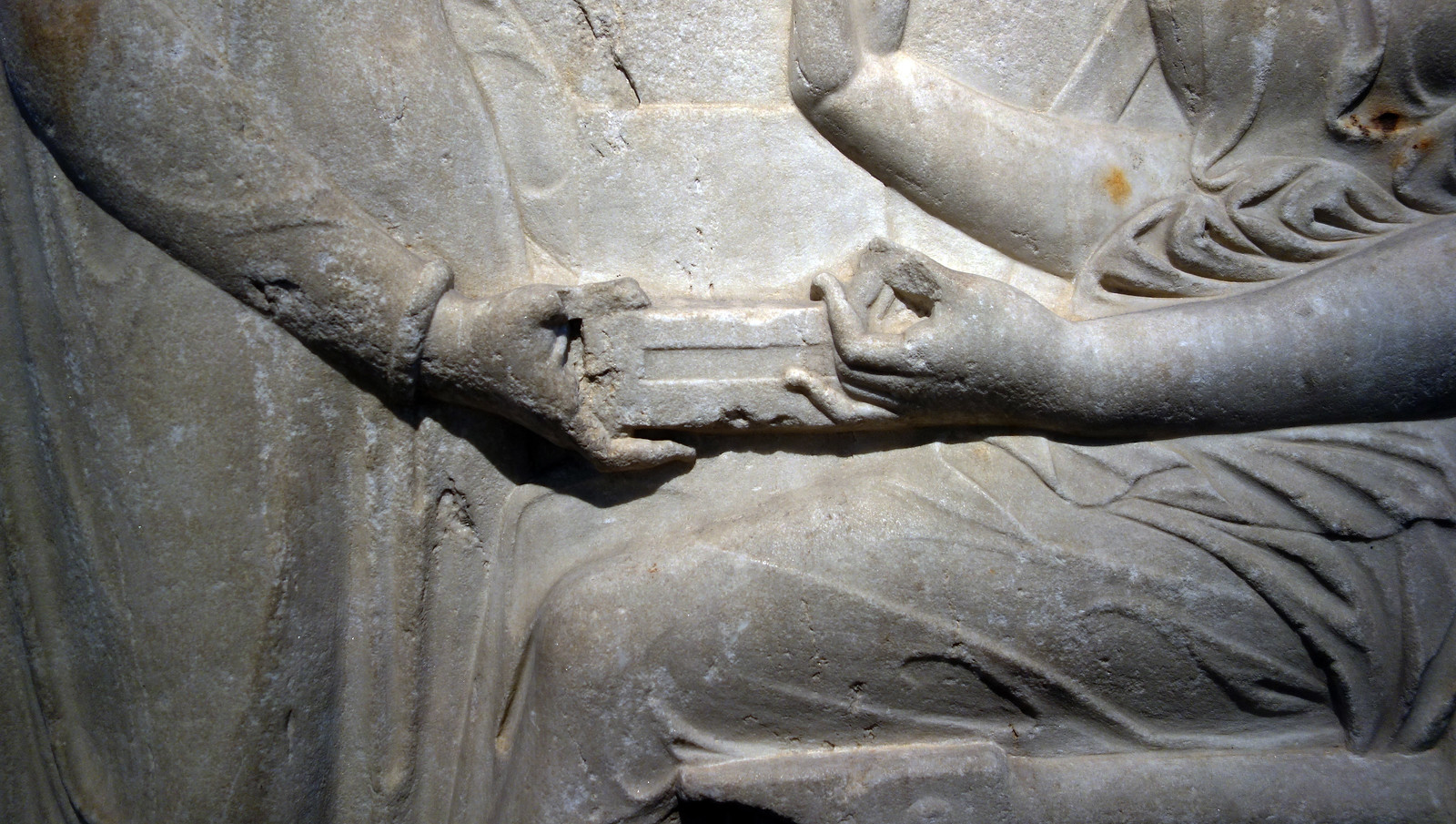When you hear the word “tombstone,” what comes to mind? Perhaps an image of a graveyard or the letters “R.I.P.” with a name and date. These are the hallmarks of a modern, idealized burial. However, the ancient Greeks had a very different way of commemorating their dead – through the use of grave stelai, or funerary monuments. One of the most renowned examples of these ancient Greek grave stelai is the Stele of Hegeso, a captivating work of art that provides a window into the past.
The Stele of Hegeso

The Stele of Hegeso is a funerary monument attributed to the sculptor Kallimachos, dating back to around 400 BCE. Standing at a height of 1.58 meters, this relief sculpture was carved from pentelic marble, the marble of Athens, and was discovered in the Kerameikos Cemetery as part of the Koroibos’ family plot. Despite its age, the monument remains in good condition, with only minor restorations to the exterior frame.
The stele depicts two figures: a standing female figure identified as a maid, and a reclining female figure known as Hegeso. Characteristic of the time period, neither figure portrays any facial expression. Hegeso appears to be examining the contents of a jewelry box offered by her maid, though the specific item she is holding is now lost, as it was originally painted on.

Symbols of Status and Importance
The Stele of Hegeso provides numerous clues that Hegeso was a figure of high status. Her elaborate wardrobe, which includes a himation (wrap) over a chiton (draped garment), a snood worn over her hair, and intricate sandals, stands in stark contrast to the simple tunic and head scarf worn by her attendant. Hegeso is also seated on a lavish chair and has a foot rest, further emphasizing her elevated social standing.
The inscription on the epistyle (the beam resting on the columns) also serves to associate Hegeso with a wealthy family, as it includes her father’s name, Proxenos. This was a common practice in ancient Greece, as it allowed observers to identify the deceased’s family and social status.
The Significance of Grave Stelai

The Stele of Hegeso can be considered a typical example of the grave stelai that were common in ancient Greece. Women were often the subject of these funerary monuments, as they were deemed appropriate for commemorating the dead. The stele’s depiction of Hegeso’s social category and family status, as well as the inclusion of her lavish possessions and servant, are all hallmarks of these ancient Greek grave stelai.
Interestingly, these monuments served both public and private messages. While the stele was a public display, the columns and architectural elements alluded to the city-state (polis), while the focus on the domestic setting and household (oikos) activities represented the private realm. This interplay between the public and private spheres was a characteristic of ancient Greek grave stelai.
Conclusion
The Stele of Hegeso is a captivating work of art that provides a glimpse into the past and the way ancient Greeks commemorated their dead. Through the depiction of Hegeso’s wealth, status, and family connections, this funerary monument offers a unique perspective on the social and cultural norms of the time. As we continue to study and appreciate the Stele of Hegeso, we can gain a deeper understanding of the rich and complex world of ancient Greek art and society.
